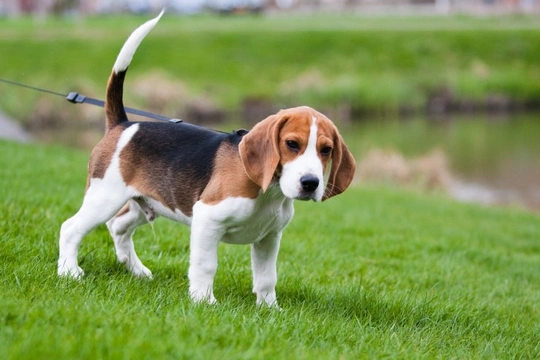
How the beagle’s versatility has helped to make the breed so popular
The beagle dog breed is the UK’s 21st most popular overall, and unlike many other breeds they made the transition from being almost exclusively working dogs throughout most of their history into becoming much in demand as pets with relative ease.
The breed as a whole has a lot going for it, but they also have some challenges – they are lively and active dogs that are one of the most excitable breeds overall, which means they need lots of exercise, stimulation and careful management.
When it comes to versatility, the beagle is one of the most versatile breeds overall, and it is their versatile, adaptable natures that have helped in large part to make them one of our most popular pet breeds today.
In this article we will look at what makes the beagle so versatile, and why this has helped to make them so popular – including covering some of the various roles that they fulfil for different purposes and the scope of their full range of capabilities. Read on to learn more.
Their size
The beagle is a small dog breed – standing between 33-41cm tall at the withers and weighing up to 11kg at the top end. This makes them small but not tiny – which helps to contribute to their popularity. Smaller dogs can live happily in homes both small and large, making them a viable choice of pet among owners in all sorts of different living situations – while larger dogs are not really a good option for people who don’t have large homes to match.
They also appeal to people who don’t have room for a large dog but who don’t want a lapdog, instead preferring a more lively dog that likes to be physically active and that is generally very outgoing and playful as well as enjoying curling up on the sofa to watch TV with their owners after a walk.
Beagles were bred for hunting
Beagles were historically bred as hunting dogs, and the skills that initially made them in demand for this role translates well to other applications, and helped to ensure that when their traditional working role was eroded, they found their place in other areas.
Their core traits include a highly excitable nature, bags of energy and a lot of tenacity too, all of which can be channelled into a wide variety of different applications including canine sport and long runs with an owner who enjoys jogging or running regularly.
They are excellent therapy dogs
Therapy dogs are dogs that display certain distinctive personality traits that make them a good fit for offering companionship, emotional support and a reassuring presence for people who may be facing difficult situations. Therapy dogs are often used to visit both adults and children in hospital to brighten their day and provide reassurance, and to support trauma survivors and help to encourage shy or nervous children to interact with both the dog and their wider surroundings.
While beagles are very excitable, they are also very soulful dogs that soon pick up on the mood of the people around them, and they are really good at modulating their behaviour to adapt to people who may be shy or upset. Their general enthusiasm for everything results in a playful, fun-loving nature that is sure to raise a smile even in a difficult situation.
They are also gentle and affectionate, and open and engaging with strangers.
They are great for scenting work
The beagle has a very highly attuned sense of smell, even compared to most other dog breeds – and this, combined with their tenacity and enthusiasm, makes them great dogs to train for scenting and detection work.
When properly trained, beagles can take up and memorise a scent and pursue it tirelessly, which has resulted in their use within a wide range of different working roles that involve scenting and detection.
Some of the detection dog roles that beagles are used for across the world include sniffing out explosives, drugs, people, termites and bedbugs, to name just a few!
Assistance dogs
While beagles are not one of the dog breeds most commonly trained up as assistance dogs, a number of dogs of the breed have successfully found their place within roles of this type. Assistance dogs are trained to help people with disabilities to lead independent lives and keep themselves safe, which has a wide range of potential applications.
Beagles can alert deaf owners to the sound of the doorbell or someone knocking, as well as being trained to act quickly if they hear a fire alarm go off within their home. They can also help to guide blind and partially sighted people around obstacles, and some trained beagles will even actively seek help from other people if their owners are in trouble.
Beagles as pets
All of the above traits and roles display the beagle’s versatility, and helps to ensure that they find their place as pets and companions with owners of different types and from all walks of life. They are notable for being very good with children and often enjoy playing with the children in their families – and they are a sociable and outgoing breed that usually happily greets strangers with no wariness or aggression.
This means that they don’t make good guard dogs – although they will probably bark to alert you of a potential burglar, before running up to welcome them in!



